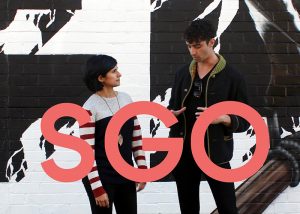A continuation of my thoughts on the 2013/2014 Muslim World Study Tour with Griffith University…

Beautiful Arabic art in Malaysia.
Tun Dr Mahathir Mohamad’s opinion about economics I believe has many similarities to Chinese traditions of thought. He said that if you take 100% of anything to yourself, the economy won’t grow. He stated that the slice that each gets is much bigger when there is harmony and negotiation. Rhetoric, yes, but his underlying aim was to grow the economy ‘cake’, so that each may have a greater slice. Though the country was still in a ‘developing’ stage, more than I thought, too, the general standard of living and cost of living seemed reasonable (everything was quite cheap, much cheaper than its neighbour, Singapore). Yet objectively, Malaysia’s economy I found to be quite mixed. Physically visible indicators of economic strength and stability where evident across the city. Most notably was building design and construction. The city’s buildings seem halted circa the late 1990s, around the time of the Asian Financial Crisis. It appears that only in the past few years building construction has taken off again, with the majority of buildings remain stuck in a timewarp pre-AFC. It is with good reason then that former PM Mahathir reinforced the slogan “prosper thy neighbour”. Malaysia’s economy is greatly dependent on its neighbour’s supply and demand, so when their neighbours are doing well/not well, Malaysia will also do well/ not well.

Graffiti of arms reaching out windows in central Istanbul.
As a newly industrialised economy, Turkey is moving full steam ahead and currently ranks in the top 20 largest economies in the world, the largest of all its near neighbours. The cost of living I found to be comparable to Australia (cheaper, but still comparable) and at least in the city centre of Istanbul, the standard of living appeared quite high. However high levels of inflation and general disgruntlement within the Turkish population towards its politicians point to problems under the surface. Even the graffiti – arms reaching out of windows, as if crying and calling for some form of help – hint that there is more than meets the eye to Turkey. With an average annual gross income at around $27000, I’m not sure the wages match the economic success of the country as a whole (OECD Better Life Index 2013).

Granada.
The economy of Spain was not what I expected. I knew that they were in an economic slump which they had not yet managed to crawl out of, but even so my mind connected Europe to money, rich nations and relatively wealthy people. In Spain there were old buildings everywhere, run-down apartments block and lots of graffiti that you couldn’t escape from. I loved the graffiti and I thought it added greatly to the atmosphere of Granada in particular, but I also couldn’t help but think that maybe it was a result of the poor economic situation and of Spain’s general disgruntlement with the social state of affairs. With 25% unemployment, and 50% unemployment for Spain’s young people, it’s not hard to imagine that society is feeling the pressure. The Mezquita Mayor de Granada, Abdul Hakim Praena, stated that if there was no tourism, Granada would be in serious trouble, and I can easily picture it. As it is, the city runs on tourism and education – the university having approximately 62000 students and out of the entire population of Granada, 25% are students. It did create a very friendly, lively atmosphere, with so many young people around. Yet with all these economic problems you would expect a better cost of living than I actually found. Even compared to Australia, everything was very expensive and I found I ran through my money more quickly than anywhere else.

Honey in bottles of coca cola on the side of the road in Morocco.

Pristine rock pool in Rabat…
Morocco is a developing nation and as a comparison of other developing nations I’d been to, I just had to look at the roads. In Lao, there are very few paved roads, and most roads between towns are single lane dirt tracks. In Cambodia, the cities have (mostly) bitumen roads, even if in between cities they were still gravel. But Morocco had bitumen roads everywhere, and most were in really great quality. It surprised me, but for me was a good indicator of its level of development. The cost of living in Morocco is low, yet so are wages (with the average income at around $8500 per year) and so it is a case of everything improving as the economy grows. Most notably, the income disparity between rural and urban locations is significant, with urban populations earning almost double that of rural areas. I feel that because of the distance Morocco has to go until it is economically “comfortable”, some areas are prioritised over others, particularly regarding the environment. I find this sad, that we must sacrifice one thing (the environment) for another (the economy)… From here, Morocco can only improve though, right?
Keep tuned – 1 more blogs are on their way! ![]() These blog pieces are part of my assessment for the course.
These blog pieces are part of my assessment for the course.



